
Electronic english version since 2022 |
The newspaper was founded in November 1957
| |
|
Number 40 (4688) |
Event comment
At the XXV International Baldin Seminar
The anniversary XXV International Baldin Seminar on problems of high energy physics entitled "Relativistic nuclear physics and quantum chromodynamics" was held at BLTP JINR on 18 - 23 September. The unofficial name of the seminars in this series is "Baldin Autumn".
230 scientists and specialists from 11 countries participated in it. The programme included 153 reports, of which 83 were presented at plenary sessions. 83 young specialists (under 35 years of age) took part in the Seminar; most of them made reports on their research and methodological developments.
This series of seminars started in 1969 with the support of Academician M.A.Markov. The 25th anniversary was held in the year of important dates for the Laboratory of High Energy Physics of JINR named after V.I.Veksler and A.M.Baldin. These dates are directly related to the outstanding scientists the Laboratory is named after. 70 years ago, headed by V.I.Veksler, the Hydrotechnical Laboratory was established that later was named Laboratory of High Energy (LHE) and was a member of JINR in 1956.
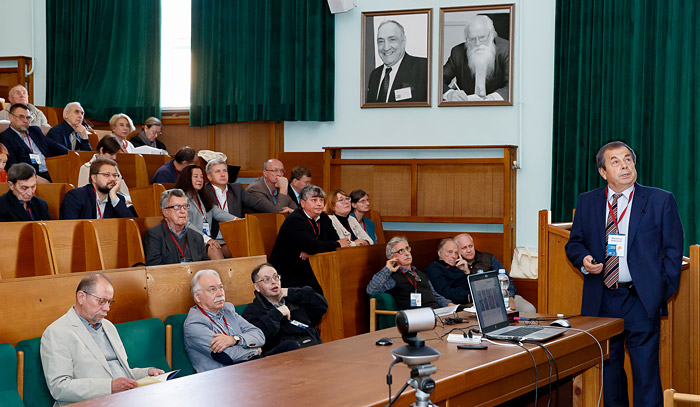
In 1957, under the direct supervision of V.I.Veksler, the largest accelerator at that time, the synchrophasotron, was put into operation. The energy of the accelerated protons reached 10 GeV that was a record value at that time. Until 2002, unique research was carried out at the synchrophasotron. Since the late 1960s, nuclei began to be accelerated on it that marked the beginning of a new area of high energy physics - relativistic nuclear physics. This area owes its birth to A.M.Baldin that became Director of LHE in 1968 and one of the founders of this area.
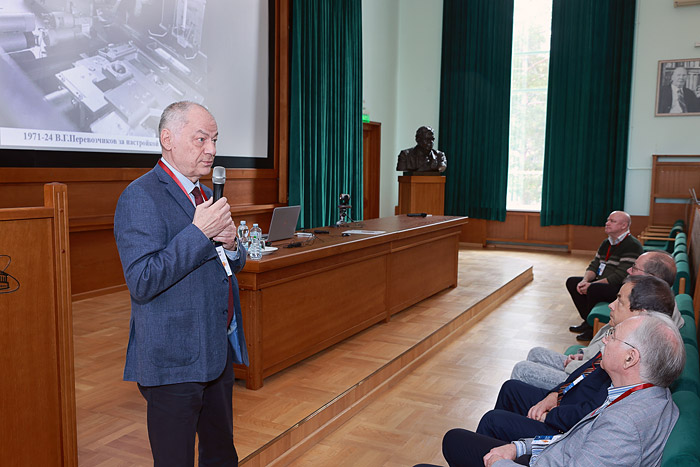
The name of A.M.Baldin is also associated with two other important milestones in the work of the laboratory. In the mid-1980s, a source of polarized deuterons was developed at LHE headed by Yu.K.Pilipenko and systematic research into spin physics started. The second important milestone in the development of the laboratory, celebrated at this Seminar, was the 30th anniversary of the start of operation in 1993 of the world's first nuclear accelerator based on fundamentally new magnets using superconducting technologies, the Nuclotron. The Nuclotron still operates today, being one of the key components of the NICA accelerator complex currently developed at VBLHEP.
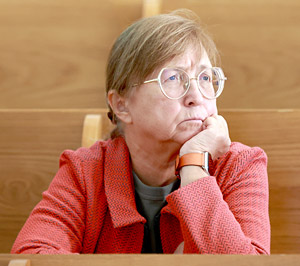 The previous XXIV "Baldin Autumn" was held in 2018. The long break was due to the pandemic. And of course, the possibility of direct communication and numerous discussions outside the sessions once again demonstrated that such an opportunity cannot be compensated by any Internet services.
The previous XXIV "Baldin Autumn" was held in 2018. The long break was due to the pandemic. And of course, the possibility of direct communication and numerous discussions outside the sessions once again demonstrated that such an opportunity cannot be compensated by any Internet services.
As part of the Seminar, a special plenary session was held dedicated to the memory of Professor V.V.Burov that for many years firstly was the scientific secretary and in recent decades - the Co-chairman of the Organizing Committee of the Seminar.
Traditionally, the latest results obtained at the world's largest accelerators (LHC, RHIC) and a number of others, including those operating at JINR, IHEP National Research Centre "Kurchatov Institute" (Protvino) and BINP SB RAS (Novosibirsk) were presented at the "Baldin Autumn". Just listing the topics covered in the reports would take several pages. Here are the most widely discussed ones. First of all, these are activities being carried out and scheduled at the NICA complex currently developed at VBLHEP JINR. The first results of the flagship BM@N project on extracted heavy ion beams and a number of reports on the development of various detectors and data processing methods are presented.
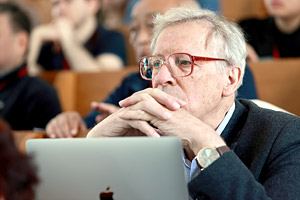 It is expected to carry out work at the NICA complex within the framework of applied projects that will use beams from the accelerator complex. The experimental results obtained at the RHIC and LHC were discussed closely related to the experimental programme of the MPD detector being developed to work at the collider with heavy ion beams. Concerning the preparation of investigations at the MPD detector, theoretical reports were presented that provide predictions of possible phenomena in the hot quark-gluon phase developed during collisions of heavy ions.
It is expected to carry out work at the NICA complex within the framework of applied projects that will use beams from the accelerator complex. The experimental results obtained at the RHIC and LHC were discussed closely related to the experimental programme of the MPD detector being developed to work at the collider with heavy ion beams. Concerning the preparation of investigations at the MPD detector, theoretical reports were presented that provide predictions of possible phenomena in the hot quark-gluon phase developed during collisions of heavy ions.
Some of the theoretical reports were dedicated to predictions of phenomena that will be studied on the second detector of the collider, designed to carry out research of polarization effects with beams of polarized light nuclei, the SPD detector. We note a good trend when theorists began to adapt approaches and methods developed for analyzing and predicting effects at the energies of the largest accelerators to the energies of the NICA complex.
 And of course, the Seminar was not complete without discussions and debates, sometimes quite emotional ones. The participation of a large number of young specialists allowed them to meet leading experts from different fields and learn a lot about the latest physical results related to modern high energy physics, as well as to establish scientific contacts with peers from other scientific centres.
And of course, the Seminar was not complete without discussions and debates, sometimes quite emotional ones. The participation of a large number of young specialists allowed them to meet leading experts from different fields and learn a lot about the latest physical results related to modern high energy physics, as well as to establish scientific contacts with peers from other scientific centres.
Six days of intense work of the Seminar were enriched by a cultural programme - a wonderful instrumental concert in the JINR Conference Centre and an excursion day free from the scientific programme. On this day, some of the Seminar participants visited the city of Tver and the traveling palace of Catherine II and the other participants visited the NICA accelerator complex at VBLHEP.
In conclusion, the Chairman of the Organizing Committee A.I.Malakhov expressed the hope of seeing the participants at the next Seminar in 2025.
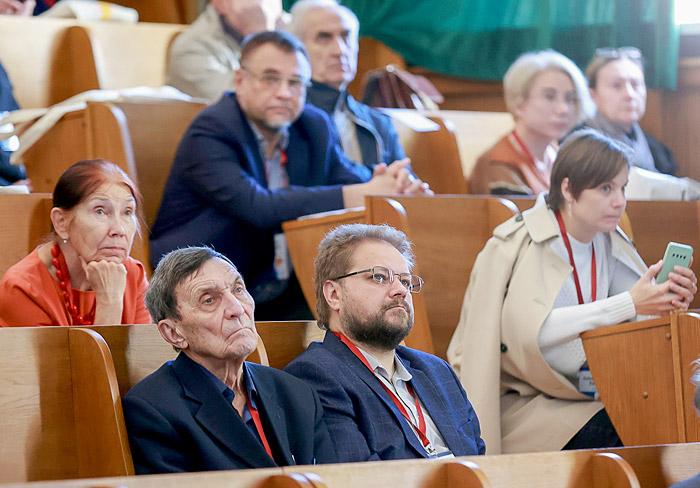
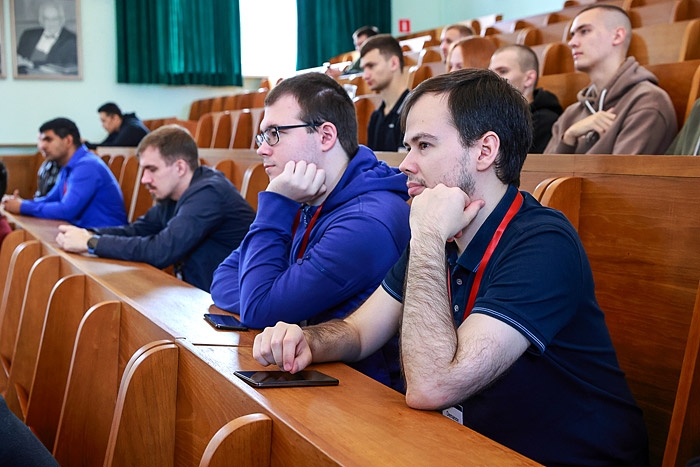
Stepan SHIMANSKY,
photo by Igor LAPENKO, Elena PUZYNINA